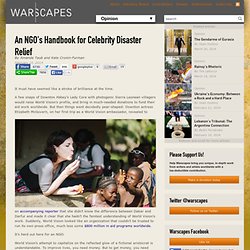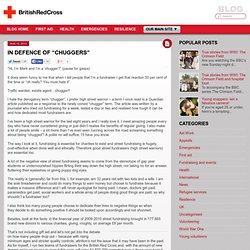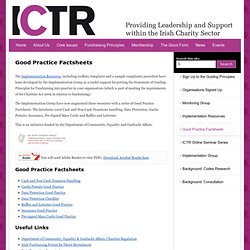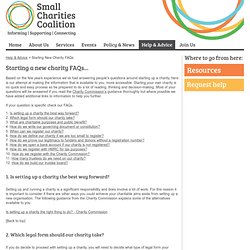

NGO-NGO learning: what works? Rebuilding after Typhoon Haiyan: just a fraction of all those reports on best practice, standards and guidelines are translated into local languages DAKAR, 8 April 2014 (IRIN) - A whole industry has emerged to foster humanitarian learning and, in the main, actors are increasingly collaborative and open when it comes to learning lessons from emergencies.

But challenges persist, including a prevailing aversity to risk as the industry corporatizes, and a disconnect between individual and institutional, formal and non-formal, learning. Humanitarian agencies and donors have increased their formal reporting requirements, and attempts to learn often turn into heavy databases, but this formal learning can overlook the rich seams of informal learning that have always driven much humanitarian innovation, said Luz Gómez, humanitarian planning, monitoring, evaluation, accountability and learning (MEAL) officer at NGO Intermon. To sink in across NGOs, learning must be engaging and efficient. Aj/cb. The Matrix Map: A Powerful Tool for Mission-Focused Nonprofits - NPQ - Nonprofit Quarterly.
PART ONE: How to Create the Matrix Map It’s easy to embrace the concept of the Dual Bottom Line, but harder to apply it in a real-world board setting.

For example, board members—and many staff—are seldom familiar with all of the programs and activities of the organization. While there may be a strong sense that “all our programs are great,” there may not have been any discussion about which programs are, in fact, those with the greatest or most important impacts. Even people with financial expertise may feel uncertain about how to make decisions that are more nuanced than “stick to the budget and at least break even.” Board meetings unintentionally support this kind of fragmentation. The Matrix Map is a visual tool that plots all of the organization’s activities—not just its programs—into a single, compelling image.
Managing an NGO. An NGO's Handbook for Celebrity Disaster Relief. It must have seemed like a stroke of brilliance at the time.

A few snaps of Downton Abbey’s Lady Cora with photogenic Sierra Leonean villagers would raise World Vision’s profile, and bring in much-needed donations to fund their aid work worldwide. But then things went decidedly pear-shaped: Downton actress Elizabeth McGovern, on her first trip as a World Vision ambassador, revealed to an accompanying reporter that she didn’t know the difference between Dakar and Darfur and made it clear that she hadn’t the faintest understanding of World Vision’s work. Suddenly, World Vision looked like an organization that couldn’t be trusted to run its own press office, much less some $800 million in aid programs worldwide.
It’s hard out here for an NGO. World Vision’s attempt to capitalize on the reflected glow of a fictional aristocrat is understandable. The celebrity ambassador seems, from a distance, to be an ingenious solution to that problem. The B-list has been pretty well picked over too. What business execs should know about NGOs.
Who are the NGO ‘Customers’? In defence of "chuggers" “Hi, I’m Mark and I’m a ‘chugger’!”

(pause for gasps) It does seem funny to me that when I tell people that I’m a fundraiser I get that reaction 50 per cent of the time or “oh really? You must hate it”. Traffic warden, estate agent…chugger!! I hate the derogatory term “chugger”. I’ve been a high street warrior for the last eight years and I really love it. The way I look at it, fundraising is essential for charities to exist and street fundraising is hugely cost-effective when done well and ethically.
A lot of the negative view of street fundraising seems to come from the stereotype of gap year students or undernourished hippies flirting their way down the high street, not taking no for an answer, fluttering their eyelashes or giving puppy dog eyes. The reality is (generally) far from this. Theory Of Change. Effective NGOs? Running an Advocacy NGO - Handbook. How to build a good small NGO. Resources for NGOs. Good Practice Factsheets. The Implementation Resources, including toolkits, templates and a sample complaints procedure have been developed by the Implementation Group as a useful support for putting the Statement of Guiding Principles for Fundraising into practice in your organisation (which is part of meeting the requirements of the Charities Act 2009 in relation to fundraising).

The Implementation Group have now augmented these resources with a series of Good Practice Factsheets. The factsheets cover Cash and Non-Cash Donations handling, Data Protection, Garda Permits, Insurance, Pre-Signed Mass Cards and Raffles and Lotteries. This is an initiative funded by the Department of Community, Equality and Gaeltacht Affairs. NGO Management Association. Managing for Results.
Strategic planning. Setting up an NGO. 6 Reasons NOT to Start a New NGO. Starting a new Charity - FAQs. Based on the few years experience we’ve had answering people's questions around starting up a charity, here is our attempt at making the information that is available to you, more accessible.

Starting your own charity is no quick and easy process so be prepared to do a lot of reading, thinking and decision-making. Most of your questions will be answered if you read the Charity Commission’s guidance thoroughly but where possible we have added additional links to information to help you further. If your question is specific check our FAQs. 1. Human Resources. Human Resource Management for NGOs. People In Aid.
Charity Salaries. Charity Regulation. NGO Corporate Governance. NGO Codes of Conduct. NGO Networks.